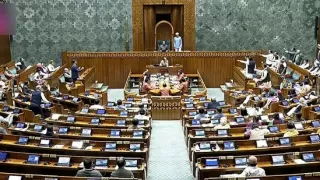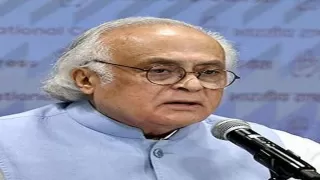On October 8, 2025, Prime Minister Narendra Modi inaugurated the Navi Mumbai International Airport (NMIA), marking a historic milestone in India's aviation sector. This state-of-the-art airport positions Mumbai alongside global cities like London, New York, and Tokyo with multiple international airports. Commercial operations are expected to begin in December 2025.
Built under a public-private partnership between Adani Airport Holdings and CIDCO, the airport spans 1,160 hectares and has been constructed at a cost of ₹19,650 crore. NMIA is designed to handle 20 million passengers annually in its initial phase and is scalable to accommodate up to 155 million passengers through four terminals and two runways in the future.
With cutting-edge digital infrastructure, NMIA is India’s first fully digital airport. It offers AI-enabled automated services, online baggage drop, pre-booked vehicle parking, and digital immigration facilities, providing passengers with a smooth, efficient, and “anxiety-free” travel experience.
India’s First Fully Digital Airport
The airport’s terminal is equipped with advanced AI-enabled automation. Passengers can track their baggage in real-time, pre-book parking slots, and complete immigration and check-in procedures online. These features aim to reduce congestion and enhance the overall passenger experience.
Additionally, NMIA will feature paperless operations, kiosks to pre-order multiple items for single-point delivery, and food delivery at the gate. These innovations are designed to streamline the travel process and provide a seamless experience for passengers.
Impressive Capacity and Expansion Plans
NMIA initially operates with one runway and terminal, handling 20 million passengers annually. As demand grows, expansion plans include four terminals and two runways, allowing the airport to manage up to 155 million passengers per year. This ensures long-term scalability and a competitive edge in India’s aviation market.
The airport's design includes a 3,700-meter-long and 60-meter-wide runway, adhering to Code F specifications to accommodate large aircraft. This infrastructure supports NMIA's goal to become a major international aviation hub.
Economic Impact and Job Creation
The airport is projected to generate over two lakh jobs across sectors such as aviation, logistics, IT, hospitality, and real estate. This economic boost is expected to contribute significantly to the development of Navi Mumbai and surrounding regions.
Furthermore, NMIA's strategic location near economic zones and ports is anticipated to enhance trade, tourism, and regional development, positioning it as a catalyst for economic growth in western Maharashtra.
Airline Operations and Connectivity
Major airlines including IndiGo, Air India Express, and Akasa Air plan to commence operations at NMIA. The airport will link Mumbai to multiple domestic and international destinations, enhancing regional and global connectivity.
NMIA's integration with existing transportation networks, such as expressways and metro lines, further facilitates easy access for passengers, making it a convenient choice for travelers.
Operational Hours and Traffic Projections
Initially, NMIA will operate for 12 hours daily, with international traffic accounting for around 40%. Over time, international traffic is expected to rise to 75%, reflecting its growing role as a major global gateway.
The phased increase in operational hours and international traffic underscores NMIA's capacity to handle a significant volume of passengers, aligning with its long-term growth objectives.
Innovative Baggage Tracking System
An AI-enabled baggage tracking system allows passengers to receive real-time updates on their luggage location. This innovation aims to make air travel more convenient and reduce travel-related anxiety.
By providing timely information on baggage status, NMIA enhances the overall passenger experience, ensuring a smooth and efficient journey from check-in to baggage claim.
Multimodal Connectivity
The airport is connected to expressways, metro lines, suburban rail networks, and waterway services, ensuring seamless access for passengers from across the Mumbai Metropolitan Region.
NMIA's integration with various transportation modes exemplifies its commitment to providing comprehensive connectivity options, facilitating convenient travel for passengers.
7 Key Facts About Navi Mumbai Airport
- First fully digital airport: Pre-book vehicle parking, online baggage drop, digital immigration, and AI-enabled terminal services.
- Initial capacity: Handles 20 million passengers annually via one runway and terminal; expandable to 155 million passengers with four terminals and two runways.
- Construction cost: Built at ₹19,650 crore, generating over 2 lakh jobs across aviation, logistics, IT, hospitality, and real estate.
- Airline operations: IndiGo, Air India Express, and Akasa Air plan to operate from NMIA, connecting various domestic and international destinations.
- Commercial operations: Begin in December 2025, initially with 40% international traffic, gradually rising to 75%.
- AI-enabled baggage tracking: Real-time updates for passengers ensure a smooth and “anxiety-free” travel experience.
- Multimodal connectivity: Linked to expressways, metro, suburban rail, and waterways for seamless access to and from the airport.
Also Read: Nissan Tekton SUV: Launch, Price, Features & Rivals Revealed





















